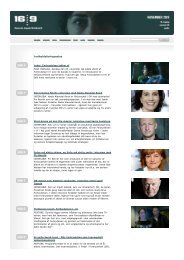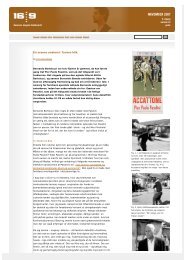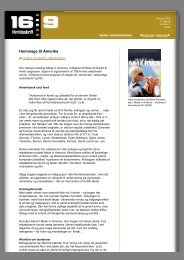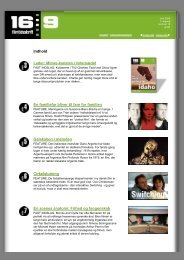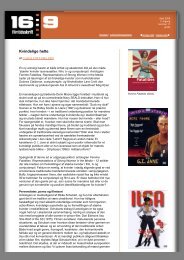Create successful ePaper yourself
Turn your PDF publications into a flip-book with our unique Google optimized e-Paper software.
September 20031. årgangnummer 3gratisforsiden | indholdsfortegnelsen forrige side | næste sideSame Tune Again!Repetition and Framing in Letter from an Unknown WomanBy V.F. PERKINSTowards the end of The Reckless Moment (Max Ophuls, 1949), at apoint when it seems the heroine's problems have been resolved, thereis a scene in a bar. The camera foregrounds an attractive youngwoman, dissolute-looking and most likely drunk, as she leans across ajuke-box to berate the mechanism: "No, no, no, no! Just play the sametune again. Same tune again!" This is in the course of a rapidmovement tracing Martin Donelly's (James Mason) agitated quest, sothe woman is held in the frame only for a moment as he pauses. Butthe sound-track retains her words beyond the passing of her image."Same tune again!" marks a stage where what seemed settled is aboutto be cast back into jeopardy, and Donnelly is about to be given areason to renew his efforts to be of service to the heroine, along withthe opportunity to resume their strange, unacknowledged courtship.An equivalent moment in Letter from an Unknown Woman comes at theopera, with the repeated calls of "Second act. Curtain going up" justwhen Stefan is about to re-enter Lisa's life [*1]. In each case the devicemarks the shape of the story, marks the story as being shaped and notjust unwinding with the course of events or the process of memory.Both devices articulate a relationship between the pattern of the storyand the pattern of the film. They do this, in part, through their stress onthings not starting but starting again. They incorporate processesindependent of the protagonists' aims and actions - the mechanism ofthe juke-box, the conventions of operatic performance - so as to invokethe routine quality of the world's repetitions and the possibility of beinghabituated or inured to its ways of going on going round.Letter from an Unknown Woman(1948).These emphases are in permanent tension with another possibility, thatof the decisive, the crucial, where every moment may be the one to bemeasured, and every step may count. Each of the charactersexperiences time differently because for each of them any givenmoment has its own, and their own, blend between the mundane andthe special. Emblematic here is the film's use of the idea of the birthdayas on the one hand an occasion that comes round year on year,advancing us stealthily from cradle to grave, and on the other asmarking a beginning, or a new beginning. The film is at pains to specifywhether a repetition is acknowledged or ignored or vaguelyapprehended, and to discriminate between repetition lived as boredomor servitude or disappointment and repetition embraced or desired asrenewal and affirmation.Such shadings are not easy to achieve. They require both boldnessand delicacy. As a ground the film builds a careful discriminationbetween its own processes and those in the lives and world of itscharacters, insisting on its own ability both to observe and to producepatterns of repetition and variation. Crucially the marked returns toStefan at various stages in his reading of Lisa's letter pronounce thefilm's paragraphing of her story by making a formal repetition out ofwhat could be mere continuation, more of the same. Once the film hasestablished its devices - Joan Fontaine's narrating voice asrepresenting the words of Lisa's letter, the moves out of and into focusas transitions from the reading present to the recounted past - it uses



